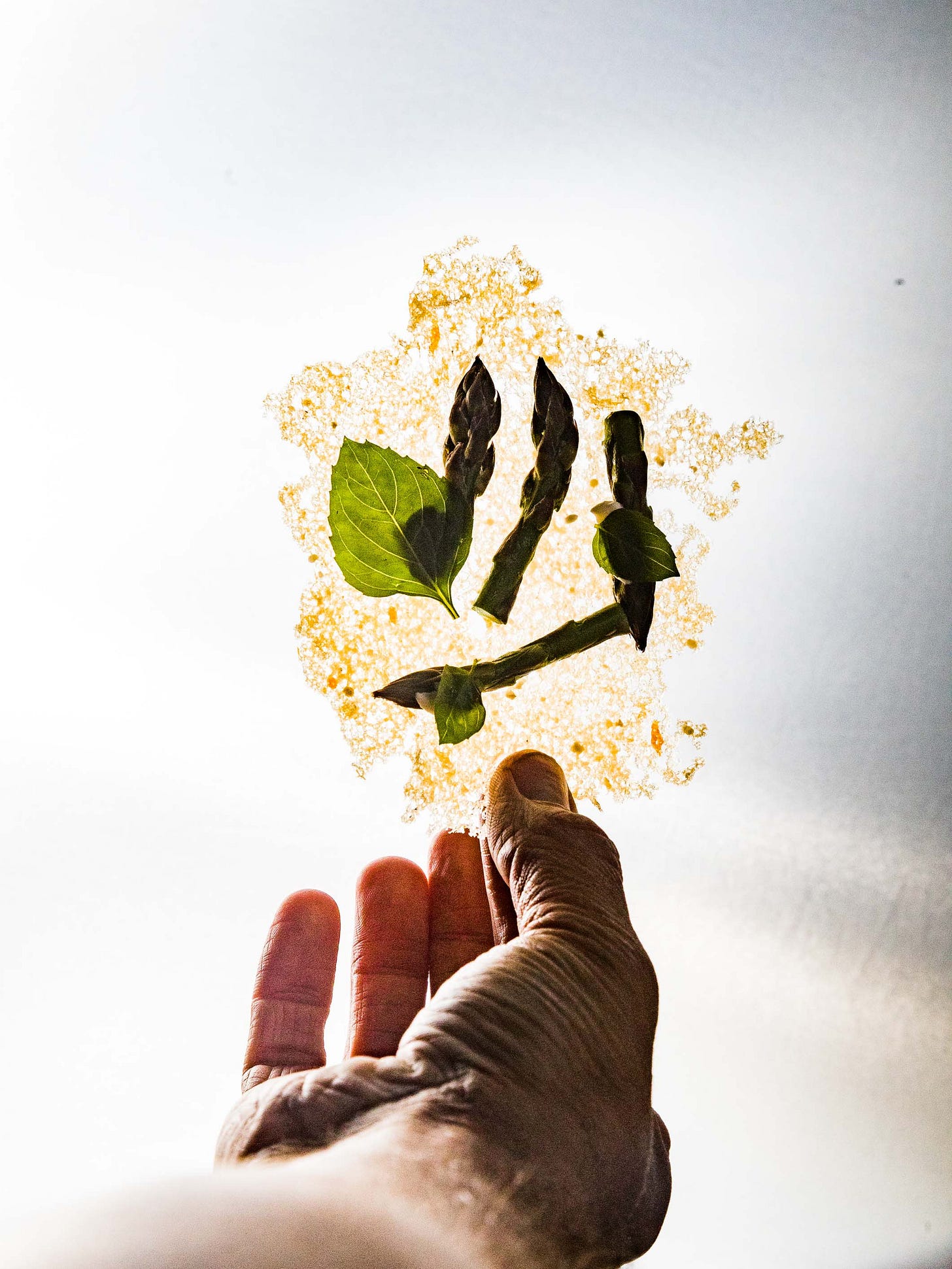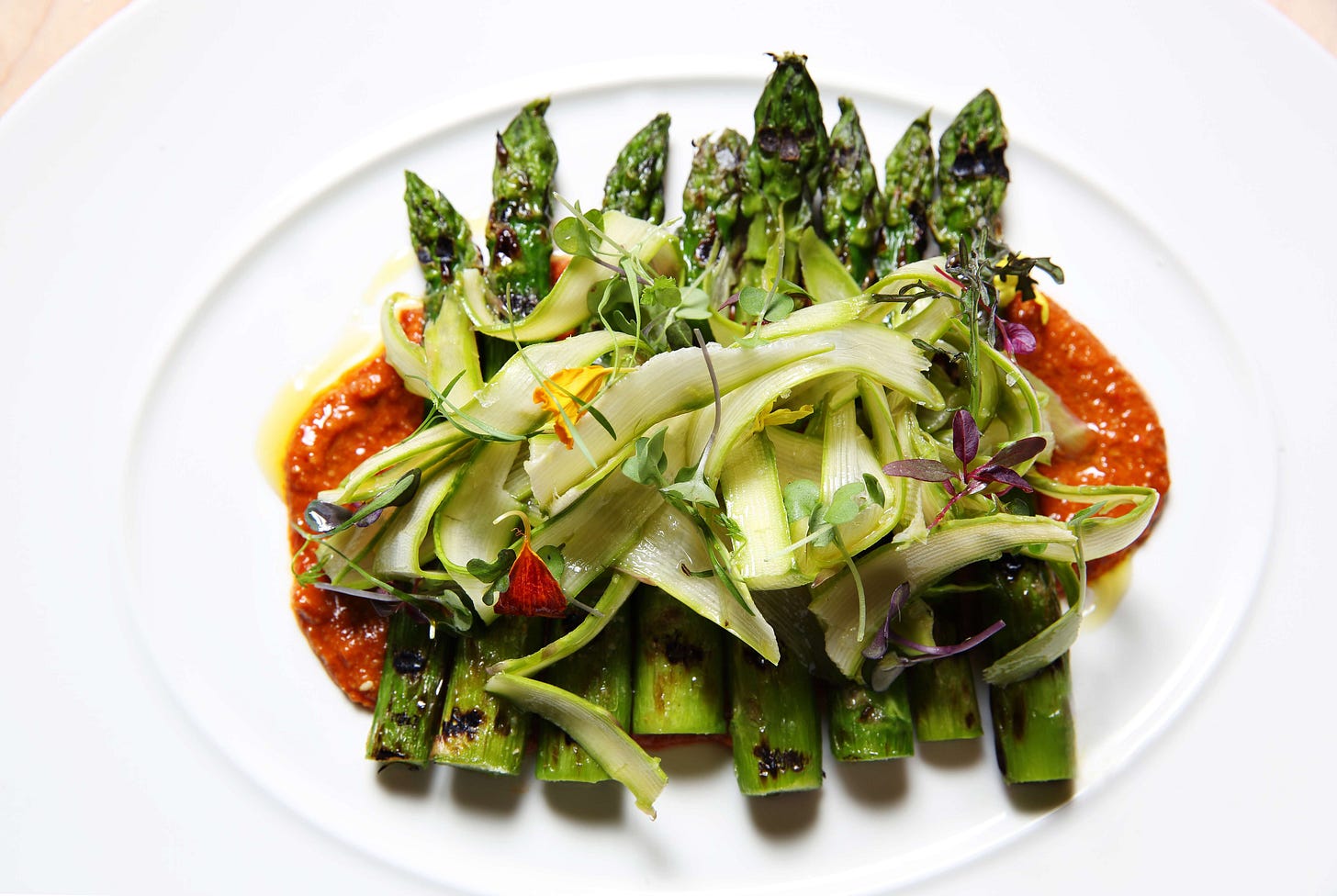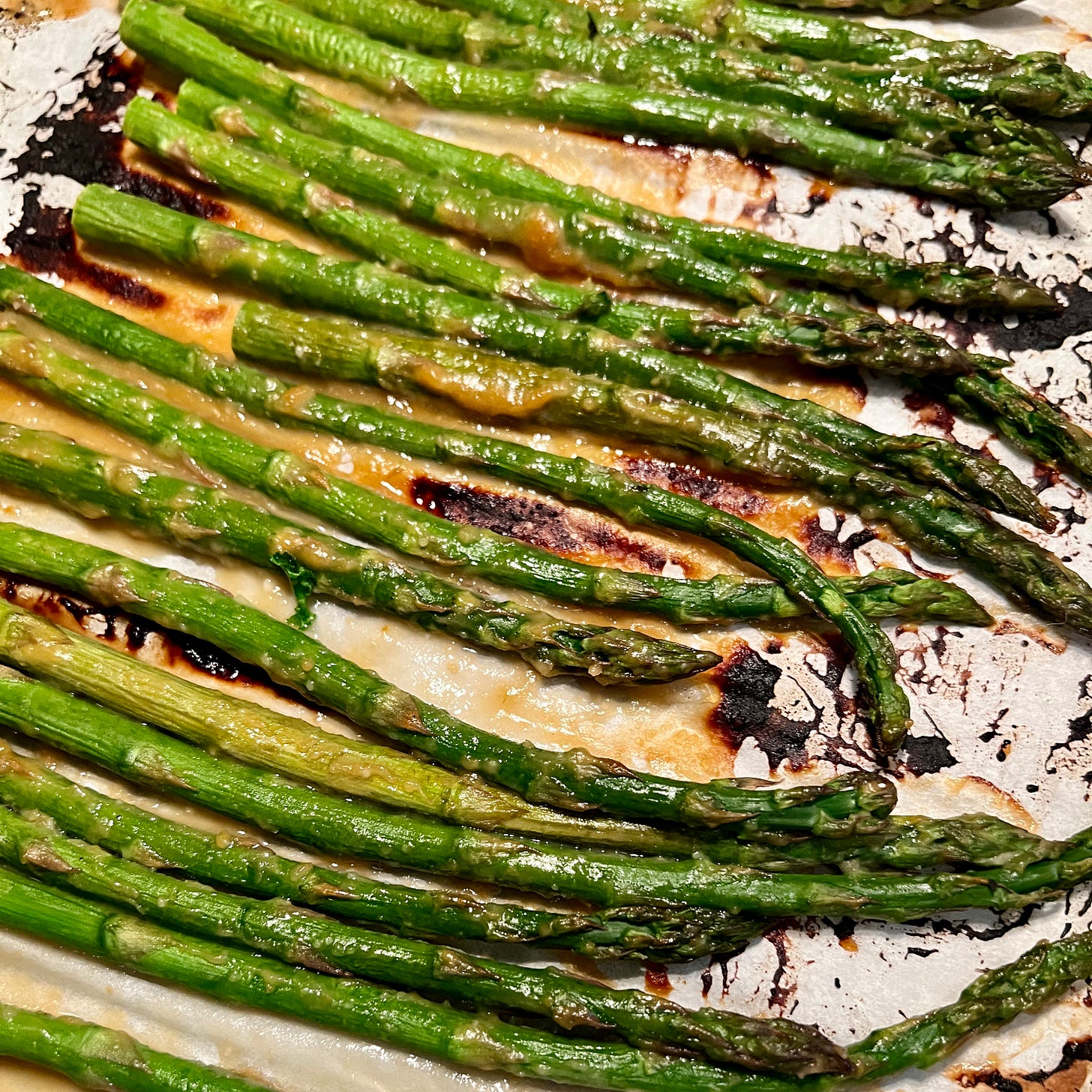Go Fry Asparagus!
Spring’s perfect vegetable.
In Spain, when you say ¡vete a freír a espárragos!—to go fry asparagus—it’s a funny way to tell someone who might be annoying you to go do something else. Like when I tell my most annoying guests to go to the corner and peel strawberries or blueberries.
But in the springtime, if my guests actually want to fry asparagus for me, I wouldn’t be too mad…because I love asparagus! To me, it is one of the most special, versatile vegetables you can find. You can really do anything with it…and of course I’ve tried. Whether you put it on the grill with a little olive oil and sea salt, as the main star in a white gazpacho, or with a traditional Spanish or Greek sauce like a romesco or a tzatziki, there’s so much you can do with a bunch of asparagus.
Asparagus has been loved throughout history for its health benefits and medicinal properties. It appears on Egyptian murals as an offering to the gods, and both the Greeks and the Romans believed it was an aphrodisiac! Today, we know that it has many antioxidants and essential vitamins, and is high in fiber and potassium.
Asparagus is grown all over the world, but the best asparagus comes from soils that are a little too saline for weeds to appear. That’s why you’ll see a lot of it in Mediterranean climates like we have in Spain…it even grows wild there! And while it’s been called many things in many languages, maybe my favorite word for it is in Turkish, kuşkonmaz, which translates to “a bird won’t land on it.”

In Spain, the asparagus season unofficially begins in south Catalunya with the Fira de l’Oli i Espàrrec—the fair of olive oil and asparagus—which happens on the second weekend of March every year. And just this last weekend, the city of Gavà (closer to Barcelona) celebrated its Fira d’Espàrreces. You know in Spain that we love our festivals, and we love our asparagus, so of course we would celebrate the vegetable all throughout the spring!
And let’s talk about the beautiful colors of asparagus. While we usually think of asparagus as green, it can also be purple or white. Purple asparagus are beautiful. Have you ever seen them? Besides adding color to a dish, they’re a little sweeter than other kinds of asparagus because they have more natural sugars than their green and white cousins. They get their color from anthocyanin, which is known to have anti-inflammatory properties…so it’s not just a pretty thing on a plate! You can prepare purple asparagus the same as you prepare other kinds of asparagus, and if you really want to preserve that beautiful purple color, give the stalks a quick blanch—boil them and then shock them in ice water.
My favorite, though, is probably white asparagus, the ghost of the asparagus family. They’re white because they’re grown underground and never see the light of day, so they never absorb chlorophyll (the chemical that otherwise makes them green) from the sun. They are harvested at night, just about when the tips start to peek out of the soil. And they’re also a bit of a ghost because their season is so short…fresh white asparagus is usually only available from April to June. During this time, you are likely to see it in markets and on every menu at every restaurant in Spain, where of course we all love them. It is very popular in the Navarre, La Rioja, and Aragon regions, from Basque country to just west of Catalunya.
Because of the short nature of the white asparagus season, it’s common to preserve them in jars or tins so they can be enjoyed year round. Preserving white asparagus is an easy process and helps it keep their beautiful color and bittersweet flavor. Unlike its green and purple cousins, white asparagus is really fibrous all the way through, so it needs to be peeled to reveal its most tender center. It’s then cooked and preserved in a simple water and salt brine. It can then be eaten either on its own with a delicious sauce or as inspiration for a recipe. Preserved white asparagus actually has its own PGI (Protected Geographical Indication), D.O. Navarre, which means when you buy it, you know that what’s inside the jar is going to be the very greatest asparagus in the world.
And don’t throw out that precious jar liquid…I use it in soup like white gazpacho, as a cocktail ingredient…or sometimes I’ll just drink it out of the jar!
My cookbooks feature a lot of asparagus recipes (like Grilled Asparagus with Smoked Labneh in my new Zaytinya cookbook, or White Asparagus with Manchego cream in Vegetables Unleashed)…depending on the type of asparagus you use, you’ll want to make sure to snap off the woody ends (where it bends naturally) so that the stalk remains as tender as possible. On larger and thicker asparagus, I’d suggest peeling them as well to preserve that tender texture. And white asparagus should always be peeled, because they have a tough fiber on the outside. But don’t waste all those peels…you can turn them into juice, or use them in a vegetable stock!
As for cooking asparagus, there are just so many ways to do it, which is one of the reasons I love to use it so much! It can be steamed, simmered, roasted, battered, sauteed or stir-fried…or my favorite way, which is to toss them in olive oil, salt and pepper, and throw them on a very hot grill! Even better if it’s a charcoal grill for extra smokiness. Add some romesco sauce, and you’ve got a perfect first course or side dish.
Whether you’re grilling, roasting, drenching in sauce, making soup or making a cocktail, asparagus is a perfect way to bring the season to your kitchen .
What are some of your favorite asparagus preparations?
Today for you I am including a rare Monday recipe inspired by my friend Nobu Matsuhisa, who created the very popular Black Cod with Miso, which might just be the most popular fish dish anywhere! You can put his miso treatment on other vegetables too, but in spring, this is one of my favorite preparations. If you serve it at dinner, I promise you that you will hear everyone asking for more asparagus!
Miso-Roasted Asparagus
Serves 4
2 tablespoons sugar (you can use honey or maple syrup here for an added layer of sweetness)
1/2 cup hot water
1/2 cup light or white miso paste
1 large bunch of medium asparagus, tough ends removed
Position an oven rack 6 inches below the heating element and preheat your oven to broil (on high if your broiler has different settings).
Mix the sugar (or honey/maple syrup) and water in a small bowl and stir until the sweetener dissolves. Whisk in the miso paste until combined and smooth.
Lay the asparagus out on a roasting pan or baking sheet. Spoon the miso on top of the asparagus, making sure to turn the asparagus so the stalks are coated all over with the sauce.
Place the pan under the broiler and cook until the asparagus are browned and cooked through and the miso is bubbling. Keep an eye on them, but generally this will take 8-10 minutes.
Remove from the oven and serve!






Thanks for the inspiration. So glad to find asparagus in our local Farmers Markets again.
Sorry Chef, but miso cannot handle high heat. You're destroying the health benefits. You have to add at the end.